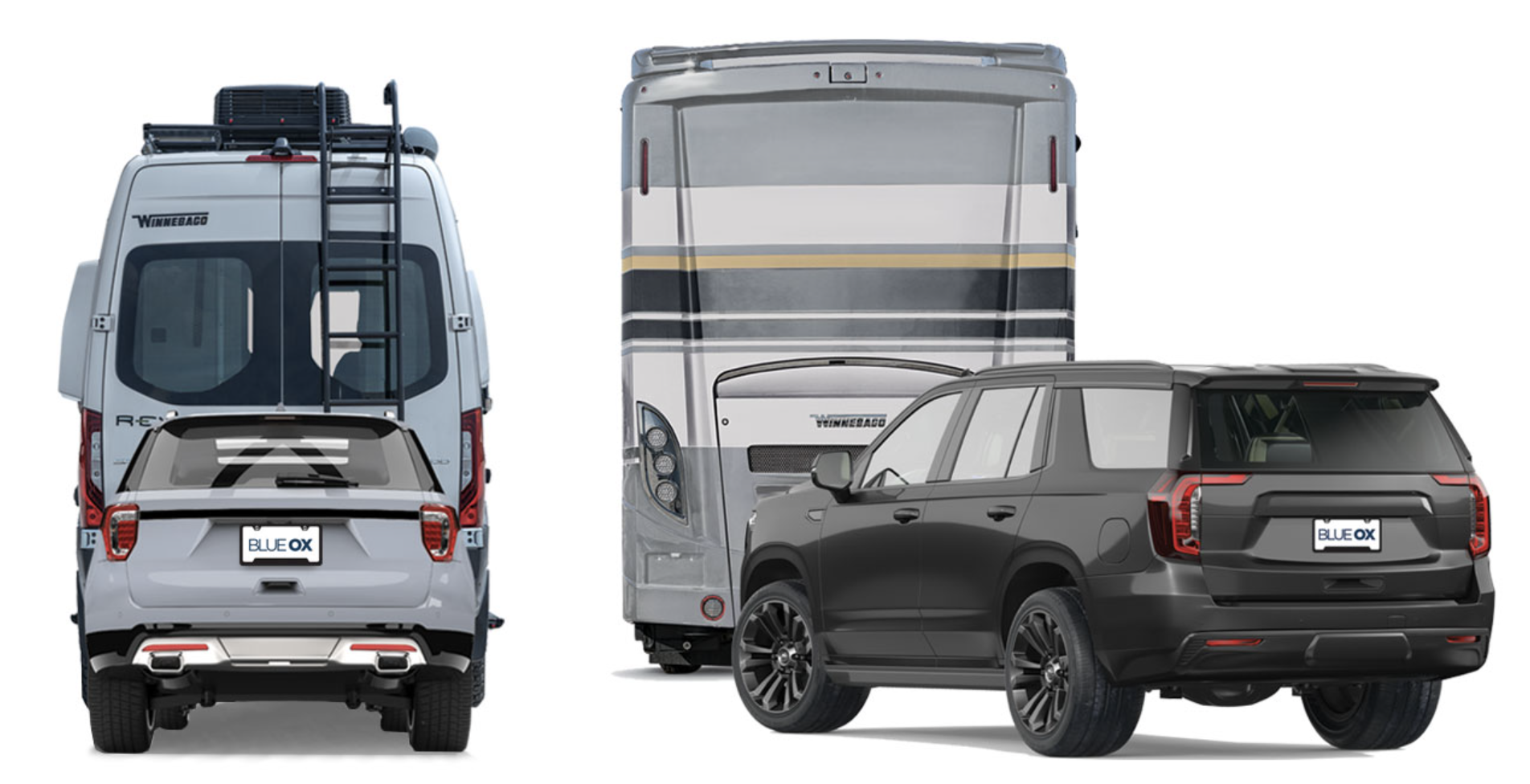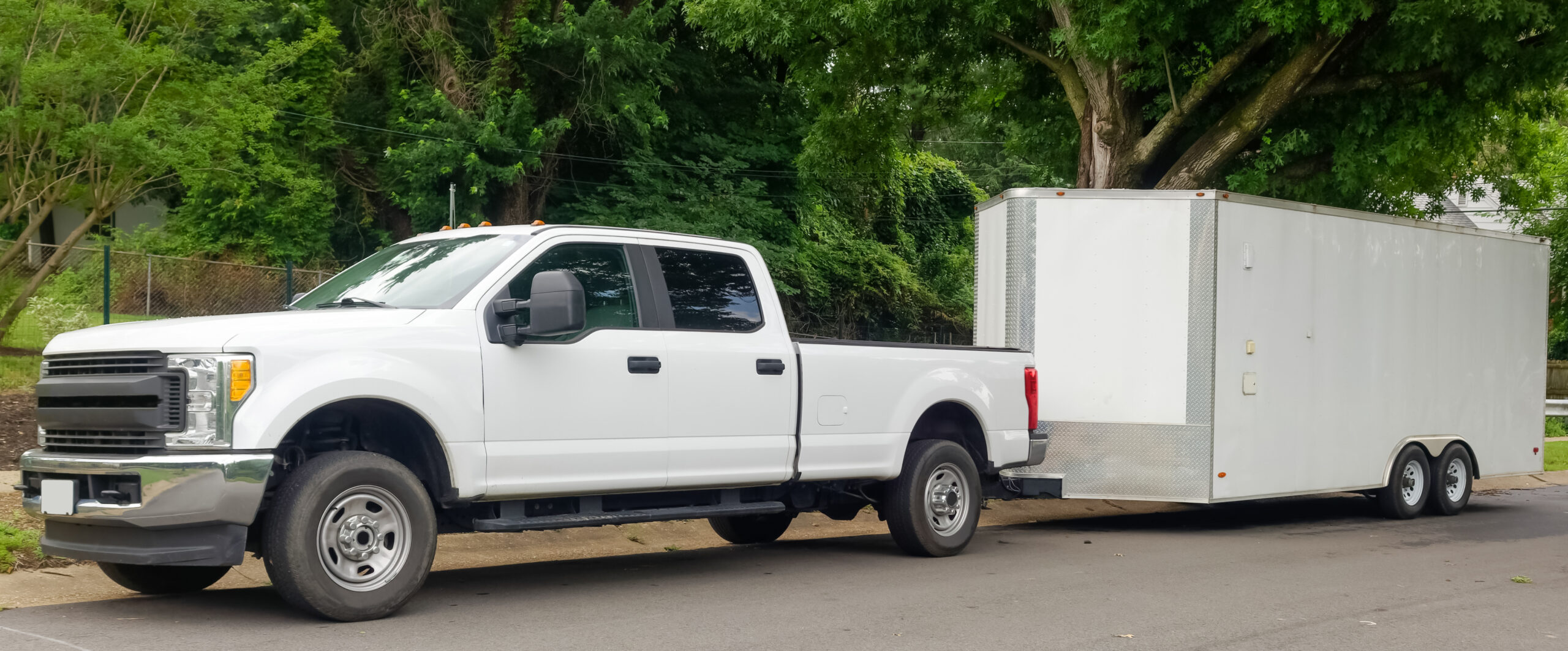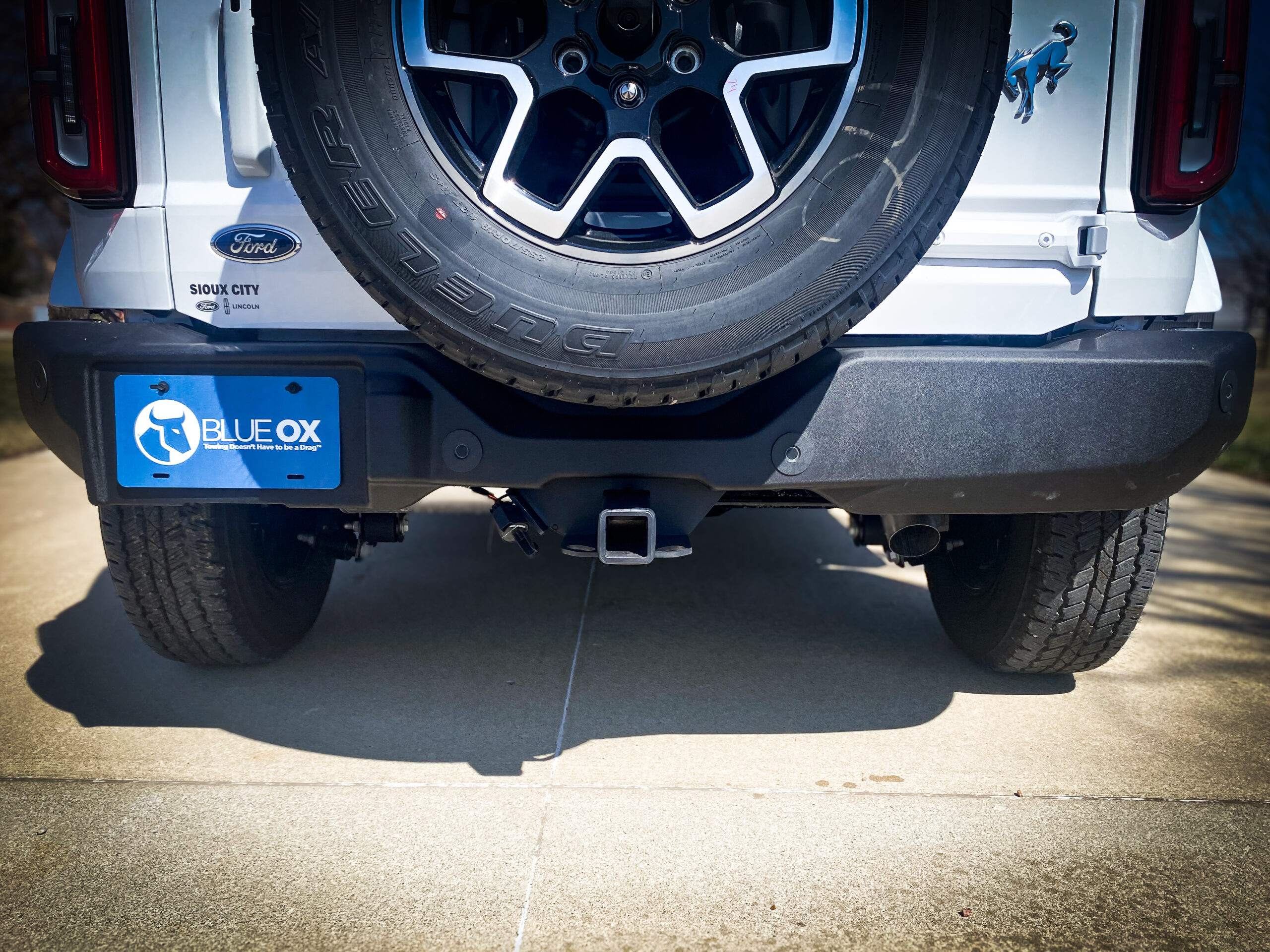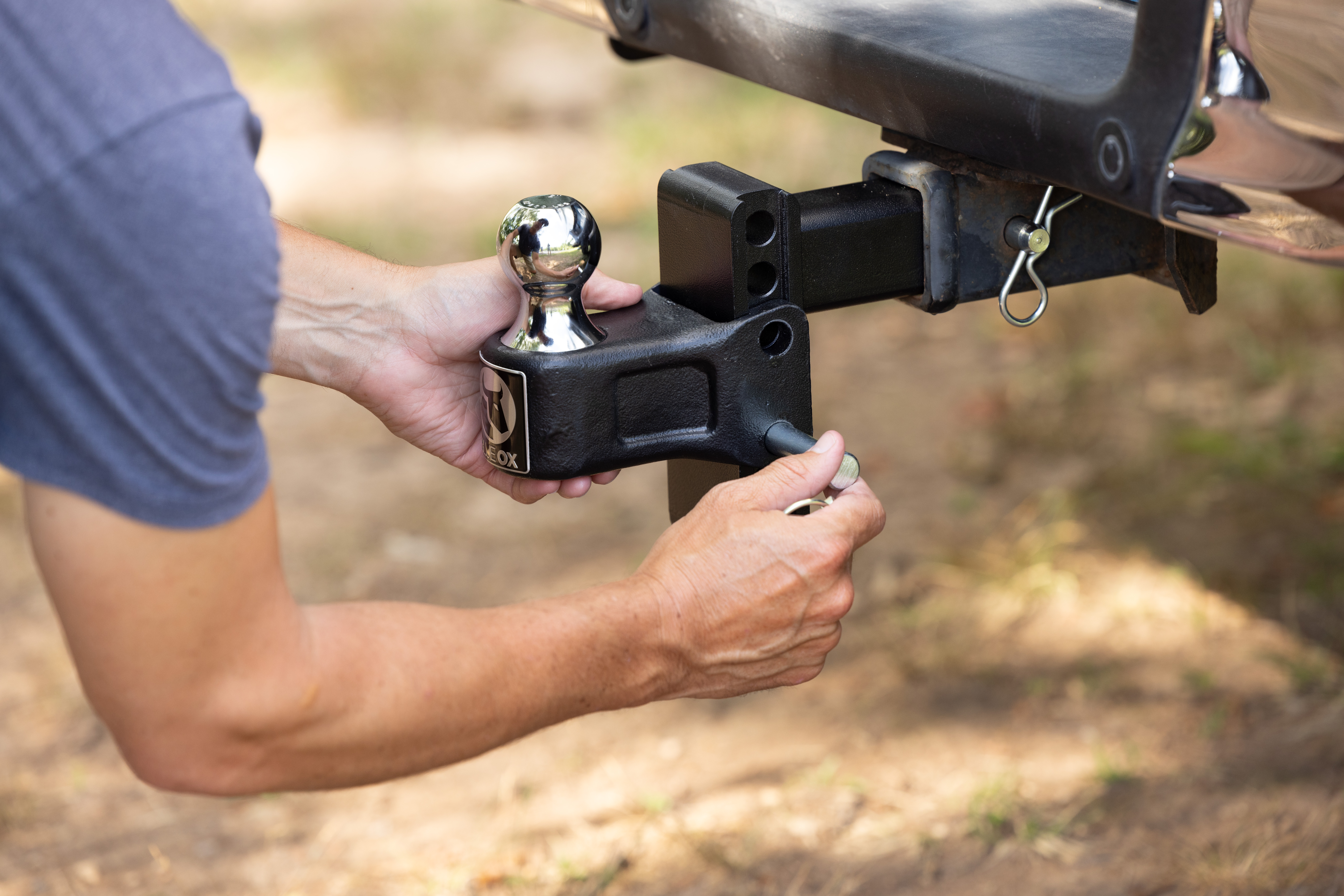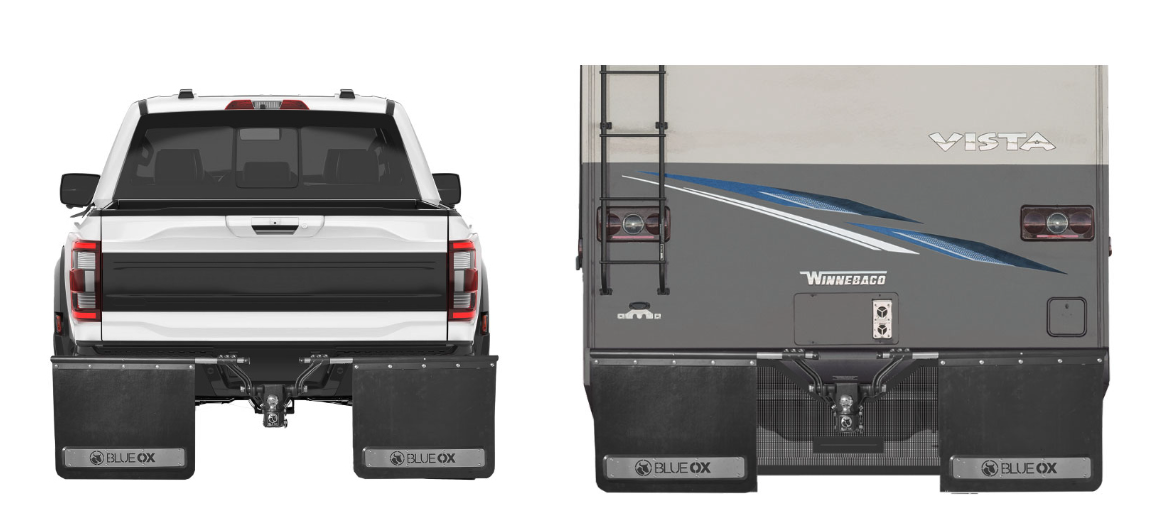Having the ability to tow one vehicle behind another can be incredibly convenient, especially when you’re RV’ing and need a smaller vehicle to get around the area once you’re parked at the campsite. Flat towing with a baseplate is one of the safest ways to do this and once you’ve installed the baseplate on your vehicle, hooking up and unhooking are a breeze. Here are some of the most important things you’ll need to know to flat tow a vehicle safely. Here is our guide to RV base plate instillation with your tow vehicle.
What is the purpose of base plates?
A baseplate is a semi-permanent bracket installed to the front of a vehicle where a tow bar can be connected. Baseplates are engineered to transfer the stress of towing and braking more evenly. This is important when flat towing, aka towing with all four wheels on the ground, so that your towed vehicle does not sustain any damage.
When Do I Need to Use a Baseplate?
When deciding to tow a vehicle with all four wheels on the ground, doing so safely requires a baseplate and tow bar. Some people also refer to flat towing as dinghy towing or four-wheel towing. One of the most common scenarios that call for flat towing is when you want to pull a vehicle behind your RV. Some people may also need to transport a second vehicle without a second driver available, with flat towing as the easiest option. Attempting to flat tow a vehicle without a baseplate is sure to cause damage to the towed vehicle and is poses a huge danger to other drivers on the road.
Benefits of Flat Towing Behind an RV
Some towing enthusiasts will tell you that pulling a car with all four wheels on the road using a tow bar and baseplate is the best way to go. Tow bars are light, handy, simple to use, and they are typically less expensive than other towing options. Some other reasons people prefer flat towing are:
- Allows you to explore when your RV is parked
- It tracks behind the RV more smoothly than a tow dolly or trailer
- It is easy to connect and disconnect
- A tow dolly or trailer are difficult to store when not in use
Flat Towing vs Tow Dolly vs Trailer Towing
Trailer Towing
When trailer towing a vehicle, all four wheels of the vehicle are off the ground and the entire vehicle is loaded onto a trailer. When using this method, you will need to know towing capacity of the vehicle pulling the trailer as well as the weight of the vehicle on the trailer, passengers, and other cargo that may be on the trailer. The vehicle you plan on using to tow will need to be powerful enough to tow both the weight of the vehicle and trailer. You will need to be sure that the trailer is licensed properly, has working brake lights and turn signals, and you will also want to check the tires.
Tow Dolly
A tow dolly leaves just two tires of the towed vehicle on the ground. A two dolly works best for vehicles that are front-wheel drive, otherwise, you could risk damaging the transmission. Certain vehicles are well-equipped to use a tow dolly or be flat towed, but it is important to check the owner’s manual first. Similar to trailer towing, considering the tow vehicle capacity and the weight of the trailer and the towed vehicle is important as well.
Flat Towing
Flat towing is the most popular way to tow a vehicle for good reason. Purchasing a tow bar and a baseplate is much more affordable than purchasing and maintaining a trailer or tow dolly. Plus when you’re not towing, you have to find somewhere to store the equipment whereas a tow bar is small and compact making it easy to stow away while the baseplate can stay installed on the car indefinitely so the vehicle is ready to be towed at a moment’s notice. However, you will need to be certain that your vehicle can be flat towed without causing damage to the transmission.
Important Things to Know When Flat Towing
While flat towing is one of the most straightforward ways to tow a vehicle, it takes a little more preparation than just installing the baseplate, attaching the tow bar, and hitting the road. Not all automatic vehicles can be flat towed as-is. To be suitable for RV towing, a vehicle must have a transmission disconnect option, rather than simply being in neutral. It is necessary to “disconnect” the transmission. It’s also crucial to have a steering wheel lockout override. This permits the wheels to track freely with the towing vehicle rather than wandering off in a separate direction.
If your vehicle cannot be flat towed as is, aftermarket equipment such as a lube pump to keep the transmission lubricated during the travel can help. The good news is that there are plenty of vehicles on the market that are perfect for flat towing.
Can I Flat Tow My Vehicle? (list updated as of May 13th, 2025.)
Always review your owner’s manual before deciding whether your vehicle can be flat towed. However, this list of vehicles are most commonly used for flat towing:
- Jeep Wrangler
- Jeep Gladiator
- Jeep Grand Cherokee
- Chevrolet Spark
- Chevrolet Colorado
- Dodge Durango
- Ford F-150
- Ford Maverick
- Ford Ranger
- Ford Bronco
- Ram 1500
- Ford Escape Hybrid
- GMC Canyon
What Equipment Do I Need When Flat Towing?
Of course, you will need a tow bar and baseplate to flat tow, but there are other pieces of equipment necessary to flat tow safely including:
- Lighting System: using auxiliary or hardwired lighting will let other drivers know when you are braking or turning.
- Braking System: using an auxiliary or hardwired braking system gives the towed vehicle the ability to brake when the tow vehicle does to decrease stress on the system.
- Safety Cables: these are required by law no matter what you are towing.
- Deflector / Protective Shield: this is optional but can help protect the front of your towed vehicle from scratches or dings from rocks
- Mud Flaps: these are also optional to cut down on road debris coming from the tow vehicles’ tires.
Do Not Back Up With a Tow Bar Attached
Many people wonder if you can back up with a tow bar attached. Pulling into a gas station or your RV site and needing to back up with a car in tow might seem harmless, but when you have a tow bar connected, you can cause a lot of damage. Tow bars are meant to only handle a load in one direction, so attempting to back up can cause the towed vehicle to jackknife and bend the tow bars or jam them into a locked position that feels impossible to release. You could also cause damage to the frame of the towed vehicle because when you start to back up, all of the force applied to the tow bar will be transferred to the frame.
Is It Hard to Install a Baseplate?
Some people are concerned about modifying their vehicle to install a baseplate for flat towing. Blue Ox baseplates do not require drastic alterations and are easily integrated into the original frame and bumper. There are no obvious, big brackets or crossbar support beams. Blue Ox Baseplates are expertly constructed, and select models have removable tabs that enhance the aesthetics of your car even when the baseplate is attached. The tabs are easy to remove when not towing, making the baseplate virtually invisible to the untrained eye. Shop our base plate kits and towing accessories.
Get a Custom Baseplate for Your Vehicle from Blue Ox
Blue Ox baseplates are custom-made to fit your specific towing needs. These durable, steel-constructed baseplates are easily integrated into the original frame and bumper of your vehicle. They are designed to flex and absorb shock during your trip while minimizing wear on the suspension. Visit the Blue Ox website to find a baseplate, make a baseplate fit request, or find a tow bar that are right for you.

